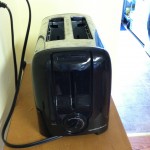I recently had a chance to pick fresh blueberries while I was vacationing in the Finger Lakes. The blueberries were just perfect, plentiful and delicious. In just under an hour I had over 10 pounds to take home! Yes, that is a lot of blueberries, but since they freeze well I have a nice supply in my household for quite a while!
Blueberries are not only a popular fruit selection, but they also rank as having one of the highest antioxidant capacities among all fruits, vegetables, spices and seasonings. Antioxidants are essential to optimizing health by helping to combat the free radicals that can damage cellular structures as well as DNA.
This noteworthy little berry has lots of other things going for it besides the antioxidants. A full cup of blueberries contains just 80 calories. When you think about it, that’s a hefty portion for few calories. Blueberries are high in fiber and one serving supplies 25% of the daily requirement for vitamin C. Researchers are currently studying four areas to further understand the role that blueberries play in good health: cardiovascular health, brain health, insulin response, and cancer risk reduction. So stay tuned, there may be even more good news about blueberries in the future.
The very best way to enjoy blueberries are raw, rather than relying upon eating blueberries incorporated into baked desserts — because, like other fruits, raw blueberries provide you with the best flavor and the greatest nutritional benefits.
Of course, if you buy a large quantity like I did, freezing them as soon as possible will assure that the nutritional value is retained. One of the best ways to freeze blueberries (or any berry for that matter) is to rinse in cold water and dry with paper towels to remove excess water. Then spread the berries out on a large baking pan or cookie sheet and put them in the freezer. Within an hour or two, the berries are frozen, and you can put them into zip lock freezer bags. Preparing the berries this way allows them to freeze separately instead of being frozen stuck together, in one large mass. When you are ready to use the berries, just take out what you need, and put the rest back in the freezer. Easy!
Here are several easy ways to enjoy blueberries!
Add frozen blueberries to your breakfast shake.
Fresh blueberries add a colorful punch to cold breakfast cereals.
For a deliciously elegant dessert, layer yogurt and blueberries in wine glasses and top with crystallized ginger.



 The past couple of posts have focused on foods that celiac patients can eat that are susceptible to contamination. Oats and beans are not the only gluten-free foods that may be cross-contaminated; other foods include meats, vegetables, gluten-free flours, fruits, and even beverages.
The past couple of posts have focused on foods that celiac patients can eat that are susceptible to contamination. Oats and beans are not the only gluten-free foods that may be cross-contaminated; other foods include meats, vegetables, gluten-free flours, fruits, and even beverages.



















